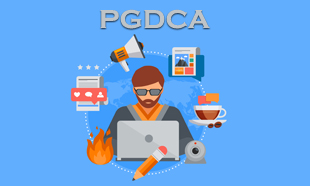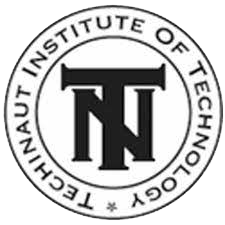7
Post Graduate Diploma in Computer Application" at Verma Computer Institute, Hazratganj, Lucknow, Uttar Pradesh, affiliated with Techinaut Institute of Technology, offers advanced training in software development, database management, and IT project management, preparing students for leadership roles in the tech industry.
POST GRADUATE DIPLOMA IN COMPUTER APPLICATION
Verma Computer Institute, nestled in the vibrant locale of Hazratganj, Lucknow, Uttar Pradesh, stands as a beacon of technological education. Among its esteemed offerings is the one-year Post Graduate Diploma in Computer Application (PGDCA), designed to equip students with comprehensive knowledge and skills in various facets of computer science. Affiliated with the Techinaut Institute of Technology, this diploma program is a gateway to lucrative career opportunities in the ever-expanding realm of information technology.
THE OBJECTIVE OF THE COURSE:
The primary objective of the PGDCA program at Verma Computer Institute is to provide students with a robust foundation in computer science and its practical applications. By the end of the program, participants will not only be proficient in essential software tools and technologies but also confident in their ability to leverage computer applications effectively to solve real-world problems. Through theoretical learning, hands-on practicals, and industry-relevant projects, students will develop the competencies to excel in diverse computer applications and technology roles.
COURSE OVERVIEW:
Curriculum Overview
The PGDCA curriculum at Verma Computer Institute is structured to cover a wide array of topics, ensuring comprehensive coverage of essential concepts and applications in computer science. Let's explore the various modules offered as part of the program:
1. Basics of ComputerThe program begins by exploring the fundamentals of computing and introducing students to a computer system's essential components and operations. Topics covered include hardware components, input/output devices, memory storage, and operating principles. Through theoretical lectures and practical demonstrations, students gain a clear understanding of the underlying principles of computing.
2. Computer AppreciationIn this module, students delve into the historical evolution and societal impact of computers. They learn about the contributions of critical pioneers in computing and explore the various applications of computers in different domains, such as education, healthcare, and business. Through case studies and discussions, students develop an appreciation for the transformative power of technology in modern society and feel inspired by the potential impact of their future careers.
3. Computer OrganizationBuilding upon the foundational knowledge acquired in the previous modules, students dive into the intricacies of computer organization and architecture. They learn about the structure and function of central processing units (CPUs), memory systems, input/output subsystems, and storage devices. Practical exercises enable students to analyze and understand the internal workings of computer systems at a deeper level.
4. Operating SystemOperating systems are the backbone of computer systems, facilitating communication between hardware and software components. In this module, students learn about operating systems like Windows, Linux, and macOS. They explore essential concepts such as process management, memory management, file systems, and security mechanisms. Practical sessions provide hands-on experience in operating system installation, configuration, and administration.
5. MS Word ProcessingProficiency in word processing is essential for effective communication and documentation in the digital age. In this module, students learn to use Microsoft Word—the industry-standard word processing software. They explore features such as document creation, formatting, editing, spell-checking, and printing. Practical exercises enable students to create professional-quality documents, reports, and presentations.
6. MS Spreadsheet PackageSpreadsheets are powerful tools for data analysis, manipulation, and visualization. In this module, students learn to use Microsoft Excel—the leading spreadsheet software. They explore features such as data entry, formulas and functions, charting, and data analysis tools. Practical exercises enable students to create and manipulate budgeting, financial, and statistical analysis spreadsheets.
7. MS Presentation PackagePractical presentation skills are essential for conveying ideas and information persuasively. In this module, students learn to use Microsoft PowerPoint—the industry-standard presentation software. They explore features such as slide creation, formatting, animations, transitions, and multimedia integration. Practical exercises enable students to design dynamic and engaging presentations for various purposes.
8. Information Technology and SocietyTechnology is deeply intertwined with society, influencing various human life and interaction aspects. In this module, students explore information technology's social, ethical, and legal implications. They examine digital privacy, cybersecurity, intellectual property rights, and the digital divide. Through case studies and discussions, students gain insight into the complex relationship between technology and society.
9. Introduction to InternetThe Internet has revolutionized communication, commerce, and information dissemination on a global scale. In this module, students learn about the history, architecture, and functioning of the Internet. They explore concepts such as TCP/IP, DNS, HTTP, and web browsers. Practical sessions enable students to navigate the Internet effectively, access online resources, and utilize web-based services.
10. Internet NetworkingNetworking is a foundational concept in computer science, enabling communication and resource sharing between devices. In this module, students learn about the principles of computer networking, including network topologies, protocols, and addressing schemes. They explore concepts such as LANs, WANs, routers, switches, and wireless networks. Practical exercises enable students to set up and configure essential computer networks.
11. E-mailE-mail remains ubiquitous in the digital age, facilitating efficient and asynchronous communication. In this module, students learn about the principles of e-mail communication, including message composition, addressing, sending, receiving, and organizing e-mails. They explore e-mail clients such as Microsoft Outlook and web-based e-mail services. Practical exercises enable students to use e-mail effectively for personal and professional communication.
12. Introduction to ProgrammingProgramming forms the backbone of software development, enabling the creation of custom applications and solutions. In this module, students are introduced to the fundamentals of programming concepts such as variables, data types, control structures, functions, and algorithms. They learn to write and debug simple programs using a high-level programming language like Python or Java.
13. Algorithms for Problem SolvingAlgorithms are essential tools for solving complex computational problems efficiently. In this module, students learn about algorithmic techniques such as searching, sorting, recursion, and dynamic programming. They explore algorithm analysis and complexity theory, enabling them to evaluate the efficiency and scalability of algorithms. Practical exercises involve implementing and analyzing algorithms for various problem domains.
Practical Applications and Case Studies
Throughout the program, students use practical applications and case studies to reinforce their learning and apply theoretical concepts in real-world scenarios. They work on projects that simulate everyday computing tasks and challenges, such as software development, data analysis, and system administration. Case studies expose students to diverse industry domains and problem-solving approaches, fostering critical thinking and problem-solving skills.
Final Assessment and Certification
The PGDCA program concludes with a final assessment to evaluate students' proficiency in computer applications and technologies. The evaluation may include written exams, practical assignments, project submissions, and presentations to assess students' knowledge, skills, and practical application of course concepts. Upon completing the assessment, students receive a prestigious Post Graduate Diploma in Computer Application from Verma Computer Institute, validating their expertise and enhancing their career prospects in information technology.
CONCLUSION:
In conclusion, the Post Graduate Diploma in Computer Application (PGDCA) offered by Verma Computer Institute is a comprehensive and practical program that equips students with the knowledge and skills necessary to excel in computer applications and technology. Through a structured curriculum covering essential topics such as computer fundamentals, software applications, programming, and information technology, students graduate from the program with a deep understanding of computer science concepts and practical experience in using computer applications effectively in professional settings.


